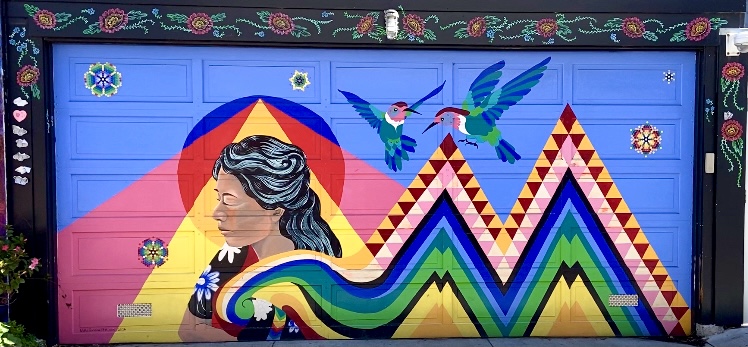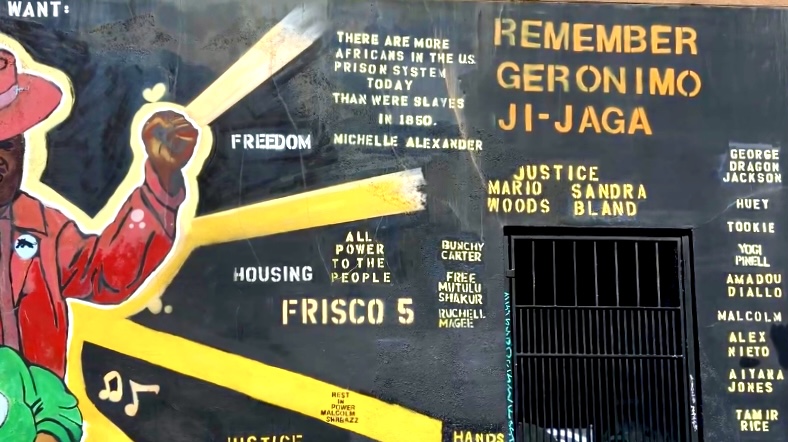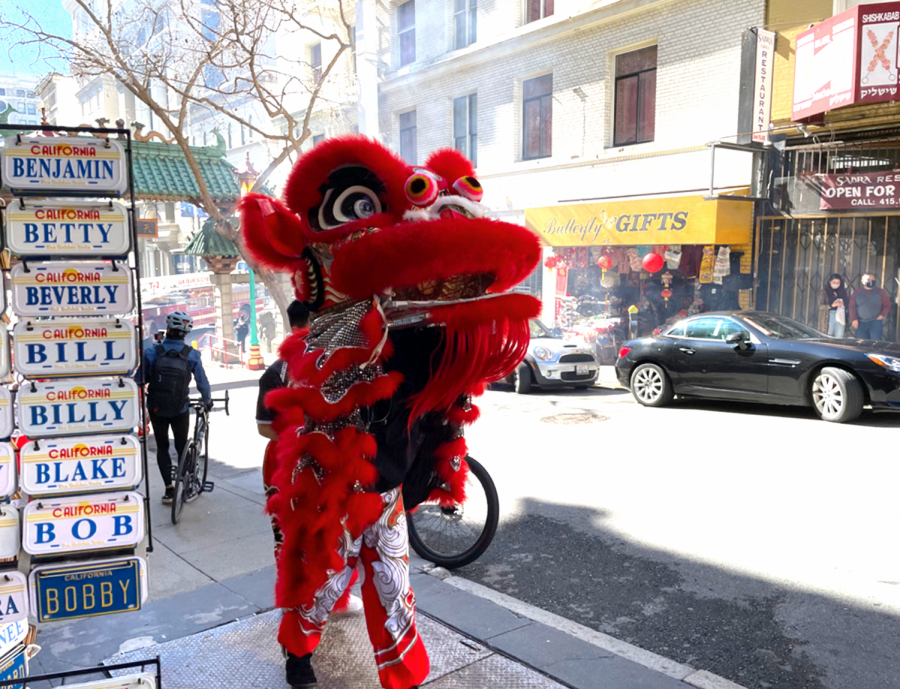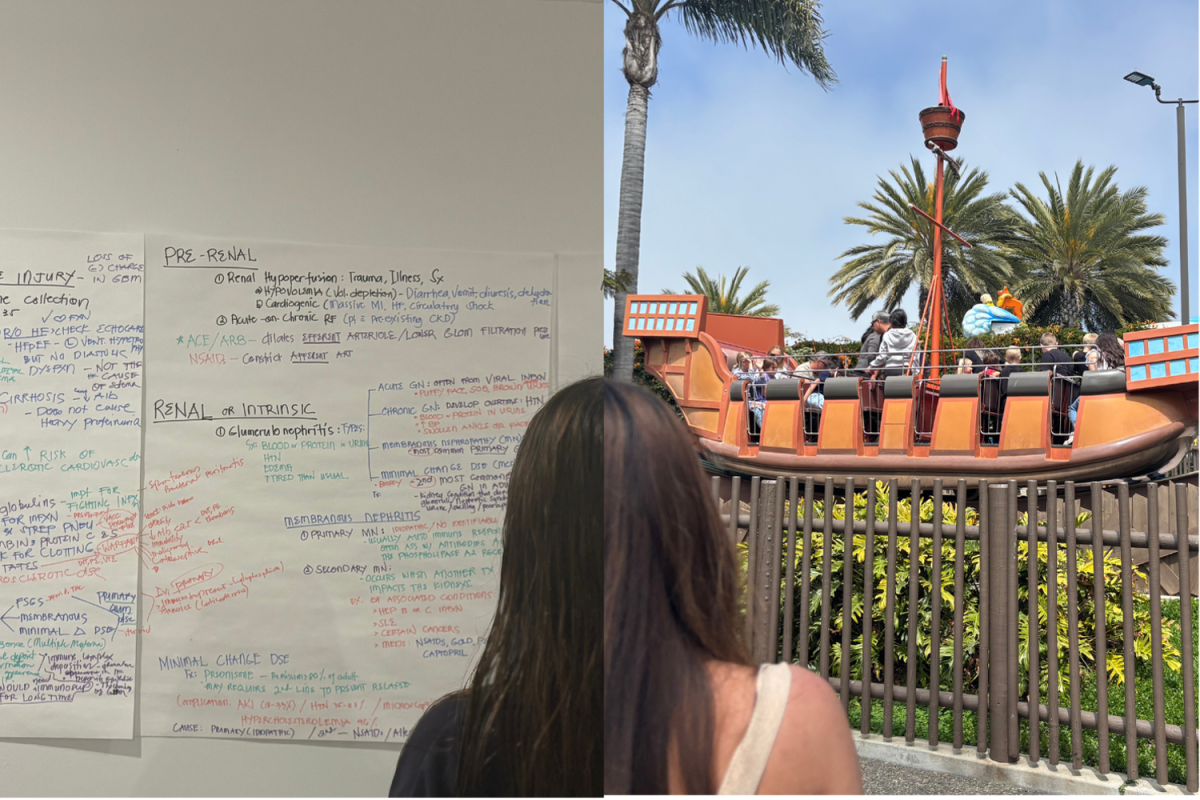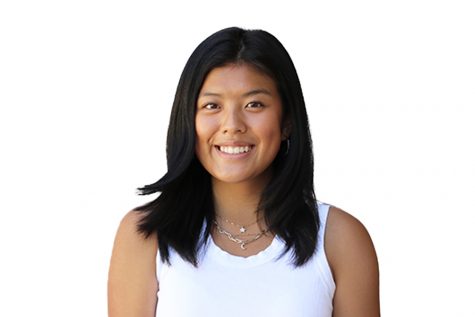On May 25, 2020, a police officer pinned George Floyd down with his knee on his neck for over eight minutes in Minneapolis, Minnesota. Floyd was later pronounced dead from suffocation. On March 16, 2021, eight people, six of whom were Asian women, were murdered in a series of mass shootings throughout three Asian-owned spas in Atlanta, Georgia.
Within the past year, people in the U.S. have witnessed numerous racially motivated hate crimes. Ultimately, they spurred a movement to advocate for racial equality in the U.S. and stop racism. Cynthia Choi, the Co-Executive Director of Chinese for Affirmative Action, believes that the movement resulted from this generation seeking progressive change in society.
“Maybe it was the fact that it was videotaped, but the murder of George Floyd kind of flipped a switch. There was this awakening, and I feel like, with every generation, we get to decide if we feel like this is normal or if we are at a time where we’re saying enough is enough and we need to do something,” Choi said.
Ron Gonzales, the president and CEO of the Hispanic Foundation of Silicon Valley, noted that racism has always been a prevalent issue in our society for centuries. However, it was highly normalized. Therefore, it never obtained the necessary amount of attention from society.
“You know, those of us who’ve been around for a little bit longer know that racism has been around. There was overt racism where white people would call non-white people different names, treat them differently, and have separate facilities,” Gonzales said. “That was for all people of color, so, unfortunately, this country has had a long history of mistreating people who are not Caucasian.”
Despite racism being a long-standing issue in our society, how exactly did modern racism and stereotypes evolve?
According to Larry Salomon, an Ethnic Studies professor at San Francisco State University, the mythology of race was created to justify a group’s conquest or colonialism as colonizers believed that other groups were inferior.
“Great Britain, for example, colonized much of Africa, Asia, and the Caribbean. To justify their actions, they said these people are different than we are. They’re inferior, savages, and they need us to bring them the blessings of civilization. It’s hard to justify murdering, controlling, and enslaving people if you think that they are as human as they are, so they invented this mythology of race,” Salomon said.
Through this mythology of believing a particular race was inferior, the group in power developed stereotypes to profile the “inferior race” negatively. We can observe this theory through acts like the Chinese Exclusion Act, Mexican Repatriation, and the Jim Crow Laws. All of these were passed due to Congress utilizing the stereotypes previously created to justify their actions and emotions towards others.
“All those laws were designed to maintain oppression, exclusion, and a racial hierarchy. But, it’s easier to pass those laws when people already believe in stereotypes,” Salomon said.
An example of passing a law with ease due to prior stereotypes is shown with the Japanese Internment Camps during World War II. Salomon emphasizes that the camps were not unpredictable as numerous negative racial stereotypes against Asian Americans existed before the war.
“For example, let’s look at when Pearl Harbor was bombed during World War II. The situation wasn’t just Pearl Harbor gets bombed, and all the Japanese Americans have to report to camps. It wasn’t that quick,” Saloman said. “There were decades and decades of stereotyping of Asian Americans in the media that primed this culture for white people to think ‘oh yeah, these are different people, so they’re not worthy of our respect because they are fundamentally different.’”
This idea of a racial hierarchy is extremely prevalent when we look at the scenarios that occurred after slavery was abolished. Since slave owners believed that African Americans were inferior to the whites, they refused to grant them equality and promoted the Jim Crow Laws. When Black Americans advocated for equal rights, the media began to negatively portray their actions, which eventually evolved to the stereotypes that still exist to this day.
“When slavery ended, the white society became threatened and fearful that these Black folks were going to impinge their profits. This was when movies, such as Birth of the Nation, started pushing this image that once Black people were free, they became savages that are out of control to justify the violent acts against them,” Salomon said.
Unfortunately, over time, the racial stereotypes that people created to maintain white supremacy have been normalized and integrated into our modern society. Every group of color in America has faced discrimination, in one way or another. Although most racial comments are said as a “joke,” those microaggressive comments are ingrained into an individuals’ self-image.
However, how do these normalized stereotypes affect different ethnic groups and people? We hope to uncover the truth and emotions behind how racial stereotypes impact various groups and individuals every day.
The experiences of Latinos
When Ron Gonzales was 6-years-old, his caucasian classmates didn’t allow him to join the pickup baseball game. Why? They said that he was “different” due to the color of his skin.
“It was harmful to hear those things, and I’m still amazed that those kinds of comments could be so hurtful to a young boy. I remember those incidents even to this day. I can even remember encounters on the playground and what I was wearing that day,” Gonzales said.
Almost 50 years later, these incidents provoked by racism still regularly occur in our society. Mia Isabel Yoch, a current junior at Carlmont High School, recalls an encounter that she will never forget.
“I was walking downtown in San Carlos with one of my other friends, who is also Latina, and I was told to go back to my country. I’m already here, so it’s really hard to try and just move past that stuff. It’s a safety concern, honestly, as it was coming from an older white man, and I was in middle school at that time,” Yoch said.
From their first-hand experiences, both Gonzales and Yoch know the struggles of growing up as a Latino in America. These incidents that have occurred to both Gonzales and Yach have motivated them to advocate against the normalized racism against the Latino community.
Gonzales is the president and CEO of the Hispanic Foundation of Silicon Valley. He believes that a fundamental component of achieving success in America is for one to obtain an education.
However, when looking at the statistics regarding the number of Latinos who possess a college degree, only 18% of Latinos in Silicon Valley have graduated from college. This number is disproportionately low compared to 50% of all Silicon Valley individuals that have a Bachelor’s degree.
Gonzales believes that these statistics are due to the lack of resources that new immigrants, specifically Latino immigrants, have. As a foundation, they strive to create equal educational opportunities for the Hispanic youth.
[embedyt] https://www.youtube.com/watch?v=8luzcqNFKxA[/embedyt]
Edited by David Su
“Many who have immigrated here have not ended up with the same access to a quality education that others have. Our objective is to try to raise that level of education to get as many of our students to be the first in their family to attend and graduate from college,” Gonzales said. “When we do that, we are helping change the trajectory of their career, and their lives and their families lives.”
Gonzales states that the stereotype of Latinos not being academically inclined has been extremely normalized. He hopes that this foundation will transform that idea and prove it wrong by providing the resources necessary for the Latino youth to excel in school. Ultimately, he hopes to increase the number of Latino Americans working in the tech industry.
“The stereotype that people have of Latinos is that we’re not good in education, specifically STEM subjects. Well, we are good at all those things, but we have to be prepared, and we have to go to high schools that offer AP classes and excel at them,” Gonzales said. “We think that student by student, professional by professional, we’re changing the image of Latinos, particularly with white people, and hopefully eliminating some of the stereotypes they may have been raised with.”
As for Yoch, she is currently the president of the Latinos Unidos club at Carlmont High School. The club’s purpose is to provide community members safe space to connect and converse with other individuals in the Latino community that face the same struggles.
“It is a really important club because it allows for easy connections between people, and it allows you to talk about real things that you can’t talk about with a lot of other people at times because they just won’t understand,” Yoch said.
[embedyt] https://www.youtube.com/watch?v=MKVgZwr3LXc[/embedyt]
Edited by David Su
Gonzales and Yoch hope that their contributions will allow other Latinos to feel connected, have their stories heard, and ultimately combat the racial stereotypes they face.
“It’s easy to feel lost and alone, a lot of the time, and when you’re in a club like this, you don’t feel so different, and you can find things to connect with other people about,” Yoch said.
The experiences of African Americans
They overreact. They are tough and loud. They aren’t that smart.
These are some of the stereotypes that Jordan English, the vice president of Black Student Union (BSU), has witnessed first-hand throughout her life. In addition to the racial stereotypes, she expresses how uncomfortable it makes her when people think that they have a right to touch her hair without permission.
However, these experiences have led English to believe that education is a huge factor when it comes to healing.
“I think the main thing is that people are scared to educate because it’s such a delicate topic, but it also is difficult for minorities to have to speak out about it constantly. White people need to start teaching themselves about these certain issues so that they can be better allies,” English said.
Similarly, Mia Yoch, the president of Latinos Unidos, works with the Black Student Union to create a space where people of color can feel a sense of belonging. Yoch has many conversations with her peers, where they often bring up questions or current topics to stay educated on the world’s current state.
“I think it’s important to explain my personal experiences so that they can also know how to explain it to others. We make sure that all of us within the club are informed so we can just bring it up and have a casual conversation and let others know, so it’s more of a personal conversation that you would choose to have with someone,” Yoch said.
These casual conversations soon lead to the signing of petitions and sharing thoughts on current events to ensure that all members have an outlet to share their feelings.
However, English says that educating people doesn’t necessarily mean that they will understand the significance of what minorities have gone through. She says taking the step to further understand and listen to people of color is what will make a change.
“We have to be able to understand each other’s circumstances and what everyone else is going through. If we’re not able to understand other minorities, it’s everyone against each other, and that’s not going to help us become a united front and speak out about these issues that all minorities are facing,” English said.
The experiences of Asian Americans
“Indian people give others cancer! I hope you enjoy staying!”
These were the words that Anjali Mehta, the president of Indian Club, received from a woman when picking up food in downtown San Carlos. Despite these racist comments, Mehta sat in her car, rolled the windows up, ignored the women, and carried on with her day.
“I guess that day I didn’t feel affected by it. Afterward, I told a couple of my white friends about it, and they were like, ‘oh my god, how are you okay?’ I was like, ‘I don’t know.’ I guess that was the day that I realized how normalized so many things are,” Mehta said.
Tolerance within Asian culture often contributes towards normalizing racist behaviors, as many like Mehta were taught to ignore and brush off these ignorant and inhumane comments. She considers it a good option in certain situations because dwelling on the event can significantly impact the person. However, she hopes that this mentality changes in later generations, and more people call out racist remarks.
[embedyt] https://www.youtube.com/watch?v=w4FWLqR4HCI[/embedyt]
Footage by Claire Tseng and edited by David Su
“My parents had told me about the racism they experienced when they moved to America. I think that they just taught me to ignore it and move on, which is good because if you spend too much time dwelling on it’ll affect you a lot,” Mehta said. “But, I also do hope that my kids and their kids after that don’t have to accept racism and just ‘deal with it’ because that’s not something that you should have to deal with.”
These hopes motivated her to become the president of the Indian Club. She believes it is essential for minorities to embrace their cultures to educate others. Ultimately, the hope is that this education will minimize racism against her community.
“I wanted to be president of the Indian club and to embrace my culture because I do think it’s really important to be proud of your culture and background. I genuinely don’t believe many people have bad intentions, it’s just that they’re not super aware. Educating people outside of your culture and talking about your culture in a way where people can learn about it is essential. This way, they’re not just ignorant in the future,” Mehta said.
Similarly, Darius Chao, the vice president of the Chinese Culture Club, speaks on how Asians don’t typically use their voice or take the initiative to fight racism due to the idea that Asian Americans have assimilated tolerance into their daily lives.
Chao has recently seen this through racist comments made about COVID-19. These phrases, such as President Trump calling the virus “kung flu” have provoked a rise in xenophobic hate crimes. Between March 2020 and Feb. 2021, over 3,000 hate crimes were reported to the STOP AAPI HATE center, many of which were violent attacks against elderly Asian Americans.
“The Coronavirus pretty much originated in China, and many people probably feel some anger and frustration towards many Asians, even though Asian Americans had no effect on it. I think it’s just that because we had the same ancestry, people feel the need to release it on us because they’re just angry that the Coronavirus broke out and their lives were affected in such negative ways,” Chao said.
[embedyt] https://www.youtube.com/watch?v=0ETpcbQD8W4[/embedyt]
Footage by Claire Tseng and edited by David Su
[embedyt] https://www.youtube.com/watch?v=eqvIELSh6AI[/embedyt]
Footage by Claire Tseng and edited by David Su
People often feel the need to release their anger on others to feel that a solution or explanation has been reached, often resulting in racism towards minorities.
However, the power of educating others about different cultures can take a greater step towards allyship and an equal world.
“I think it’s important to have those people that are similar to you and to have parents that speak Hindi or parents that have a thick accent or that eat the same kind of food as you at home, or grew up watching the same movies. I think it’s really important to always have people that understand you,” Mehta said.
The next steps
Stereotypes. Racism. Hate Crimes. How do we stop them?
Realistically, there is no one method to combat racism. Multiple faceted approaches that are geared toward addressing the immediate harm of hate crime victims would be optimal.
“You have to address the immediate harm that’s happening. We have to condemn violent attacks, whether they’re racially motivated or not. And we need to make sure that we do everything possible to support those families because it’s very, very life-changing and traumatic,” Choi said.
Choi believes that resources should be easily accessible to grieving families and that victim services should be better funded, as they only give families $500 for a funeral service.
“It’s very upsetting that people have to set up a GoFundMe account to pay for their medical bills. There’s something wrong with our society. You have to go through a third party to take care of basic needs,” Choi said. “All of those things are equally important. All of those things are under resources. But if I had to start with one area, we need to take care of people who’ve been directly hurt because they’re falling through the cracks.”
By helping victims and their families, Choi thinks that it will be the first significant step toward an equal world. However, the issues surrounding cultural attitudes and normalized racism remain prominent. People often create storylines that are simple to understand but are meant to represent a complex world. These simplified stories create a lack of understanding that manifests as stereotypes.
Salomon believes that many racist and anti-racist actions stem from the media and its portrayals, especially within the younger generation.
“There’s a generation that’s growing up and seeing that anti-racism is normalized as much as these racist images are. It’s a constant push-pull because while you have people condemning that from all sectors of the world, you also have people still pushing out these racist ideas,” Salomon said. “You still have young people on Tik Tok, Instagram, and Twitter posting things that are racist, and those who are young and impressionable have like this constant tug of war.”
Many people acknowledge that they are racist but continue to share, like, and post-racist content to appeal to particular crowds. Salomon emphasizes that the concept of racism is not simple but rather complex.
“Especially with social media and a younger audience kind of coming of age in a very different time with people protesting racism in a meaningful way. I want to grow up with a different mindset than maybe my older brothers or my parents or my grandparents’ generation did, and I hope that people do,” Salomon said.
However, discomfort must also be present to open up more people to new ideas and listen to new voices. People cannot fully be allies without stepping out of their comfort zone to acknowledge their own prejudices. This way, people can develop the ability to push back and challenge others.
“I think if people are intellectually honest, humble, and not so reactionary or defensive, then you’ll see the change that I’ve seen. I’m hopeful because I’m seeing, you know, more and more people adopt a certain perspective, but we’re in a bubble here in the Bay Area, so the news goes somewhere else, and it’s a different picture,” Solomon said.
The more open and understanding people are willing to be, the greater the progression we can make as a society. This often falls into the hands of how minorities choose to support each other.
“As long as you have people who have gone through similar things as you, they will understand where you’re coming from when you talk about the microaggressions, social media, and the Hollywood industry portrayal, or the way that you see yourself. It’s important to have other people that have that same perspective as us so that we don’t feel completely alienated,” Mehta said.
Gonzales emphasizes that there are underlying connections when analyzing the death rates amongst the Latino and African American communities during this pandemic.
“The pandemic is a perfect example. Unfortunately, the death rate amongst Latinos and African Americans is grossly higher than the general population. Generally speaking, Latinos in our region make up about 25% of the population, but here in Santa Clara County, we’ve made up 50% of the deaths, and this comes back to the fact that we can’t work from home and we got the jobs that you have to physically attend,” Gonzales said.
Gonzales believes that creating a sense of unison will be a fundamental start to combating racism as they will be stronger together.
“Like in a bicycle chain, when the links aren’t working and the wheels aren’t turning and particularly now, the minorities are the new majority. It makes all the sense in the world for us to share our common experiences to focus on our common goals and objectives for the sake of our future generations,” Gonzales said. “Together, we are much stronger than we are separated, and I just think that it’s imperative to understand.”



